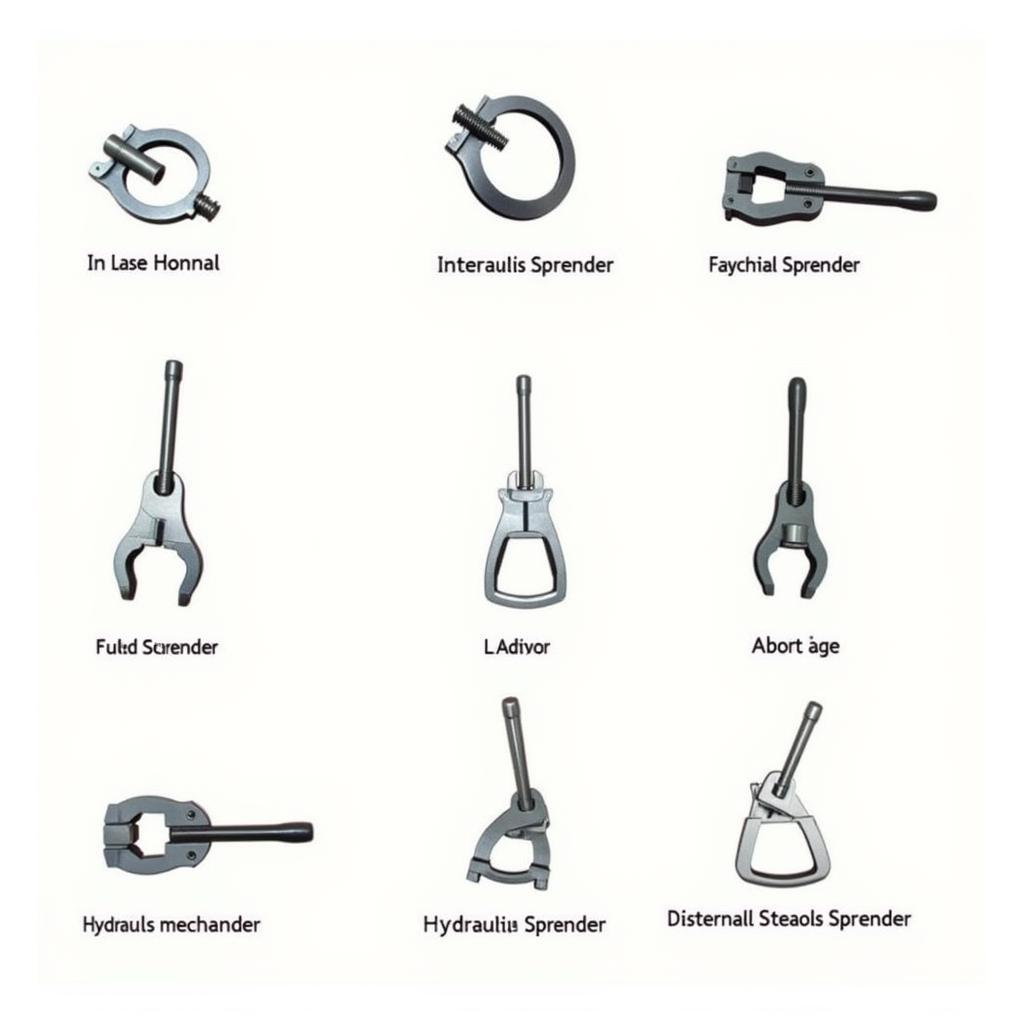A spring spreader tool for car repairs is an essential tool for any mechanic, DIY enthusiast, or professional technician. Whether you’re working on brakes, suspension, or other car components, understanding how to use a spring spreader tool effectively is crucial for safe and efficient repairs. Let’s dive into the world of spring spreaders and explore their various uses and benefits. eastwood on car flaring tool
What is a Spring Spreader Tool for Car?
A spring spreader tool, also known as a coil spring compressor, is designed to safely compress coil springs found in various parts of a car, primarily the suspension system. Compressing these springs allows mechanics to remove and install components like shocks, struts, and other suspension parts. Without a spring spreader tool, working with these loaded springs can be extremely dangerous.
Why is a Spring Spreader Tool Important?
Coil springs store a significant amount of potential energy. When disassembled incorrectly, this energy can be released suddenly, causing serious injury or damage. A spring spreader tool allows for controlled compression and release of this energy, ensuring safety during repairs.
Different Types of Spring Spreaders
Several types of spring spreaders are available, each suited for specific applications:
- Internal Spring Spreaders: These tools work inside the coil spring, offering more precise control.
- External Spring Spreaders: These tools clamp onto the outside of the coil spring, providing a broader grip.
- Hydraulic Spring Spreaders: These tools use hydraulic pressure for powerful and controlled compression.
Choosing the right type depends on the specific vehicle and the type of repair being performed.
How to Use a Spring Spreader Tool for Car Repairs
Using a spring spreader tool properly is crucial for safety and effectiveness. Here’s a step-by-step guide:
- Identify the correct spring spreader: Ensure the tool is compatible with the vehicle and spring type.
- Position the spreader: Carefully position the spreader on the spring, ensuring a secure grip.
- Compress the spring: Slowly and evenly compress the spring using the tool’s mechanism.
- Perform the repair: Once the spring is compressed, complete the necessary repairs.
- Release the spring: Slowly and carefully release the spring, ensuring the tool remains in control.
Safety Precautions When Using a Spring Spreader
- Always wear safety glasses: Protect your eyes from potential debris or flying parts.
- Use the correct tool: Never use a tool that isn’t designed for the specific application.
- Inspect the tool: Before each use, inspect the tool for damage or wear.
- Work in a well-lit area: Ensure you have adequate lighting to see clearly.
- Follow manufacturer instructions: Always consult the manufacturer’s instructions for specific safety guidelines.
Common Spring Spreader Tool Questions
What are the signs of a faulty spring? Sagging suspension, uneven ride height, and unusual noises are common signs.
How often should I replace my car’s springs? Springs typically last for a long time, but they should be inspected regularly for wear and tear.
Can I use a spring spreader on any type of car? No, different cars require different types of spring spreaders. Always consult the vehicle’s repair manual.
Conclusion: Safe and Efficient Car Repairs with the Right Spring Spreader Tool
Choosing and using the correct spring spreader tool for car repairs is paramount for both safety and efficiency. By understanding the different types of spreaders available and following proper safety precautions, you can ensure a successful repair and prevent potential injuries. Remember, investing in a quality spring spreader is an investment in your safety and the longevity of your vehicle. car jack tool kit
FAQ:
- What’s the difference between an internal and external spring compressor? Internal compressors work inside the coil, while external ones clamp onto the outside.
- Is a hydraulic spring compressor better than a mechanical one? Hydraulic compressors offer more controlled compression, but mechanical ones are often more affordable.
- What are the most common safety issues when using a spring compressor? The biggest risk is the spring releasing uncontrolled energy, which is why proper use and safety glasses are crucial.
- How do I know what size spring compressor I need? Consult your vehicle’s repair manual or a qualified mechanic.
- Can I rent a spring compressor? Yes, many auto parts stores offer tool rental services.
- What are some other essential tools for suspension work? Jack stands, wrenches, and torque wrenches are essential.
- How often should I inspect my spring compressor? Inspect it before each use for any signs of damage.
Common Scenarios and Questions:
Scenario: Replacing a strut on a McPherson strut suspension system.
Question: What type of spring compressor is best for this job?
Answer: An internal or external compressor can be used, depending on the specific vehicle and available space.
Scenario: A customer complains of a “clunking” noise from the front suspension.
Question: Could a broken spring be the cause?
Answer: Yes, a broken spring can cause various noises, including clunking. A thorough inspection is necessary.
Further Reading:
For more information on car repair tools and techniques, check out our articles on eastwood on car flaring tool instructions and eastwood on car flaring tool for 3 16 tubing amazon.
Need assistance? Contact us via WhatsApp: +1(641)206-8880, Email: [email protected] or visit us at 910 Cedar Lane, Chicago, IL 60605, USA. Our customer service team is available 24/7.

